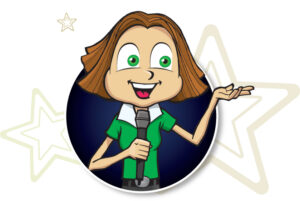If someone were to ask you to name 10 characters that represent brands, it would probably take you less than a minute. Tony the Tiger, Ronald McDonald, and the Red and Yellow M&M’s are instantly recognizable characters that live in the realm of business-to-consumer marketing. Now, if you were asked to name 10 characters in business-to-business marketing, you probably couldn’t name one. Maybe that should change.
Why characters work for Business-to-Consumer Marketing
The reason characters have worked so well for B2C companies is because they make a brand easier to understand. The characters personify the brand, making its story, values, goals and voice clearer. These relatable personas make it easier to establish that critical relationship between product and consumer. Brand characters also create excitement and are very memorable. It’s hard to forget a doughboy that laughs when you poke his belly or a walking pitcher of Kool-Aid that yells “Oh yeah!” Characters even make products like insurance more fun. Think the Aflac Duck, Geico Gecko, or Flo from Progressive Insurance.
Why Business-to-Business Marketers should consider characters
While the use of characters in B2C won’t end anytime soon, there is also a place for them in B2B if marketing teams are willing to take a risk and think outside of the box. What B2B companies should realize is that in the end, all companies are marketing to people. Whether it’s a customer in a fast food drive-thru or the hospital staff that purchases medical devices, personal connection is always key in marketing. If characters have been such an effective tool for making that connection in B2C, then shouldn’t B2B find a way to utilize it, too?
It seems that B2C companies have traditionally given more room for artistic creativity while those in B2B have maintained a serious professionalism. But instead of focusing so tightly on respectability, B2B companies should consider humanizing their product and services through a character another tool in their crafty marketing toolbox. In an industry where characters are far and few between, this could be a way for your brand to stand out.
A Successful Example

In 2007, Marketing Works developed a campaign to help pharmacy benefit management company Progressive Medical Inc. (now Helios) maintain and increase referrals. In hopes of creating a relationship with workers’ compensation claim adjusters, they created Frazzled Fran. An adjuster herself, she became the face of a direct mail campaign that highlighted different Progressive Medical services. Her relatable appeal made adjusters feel like Progressive Medical understood what they go through every day. The campaign’s average response rate was six percent per quarter and referrals increased by as much as 14 percent. The messaging resonated with 90 percent of participants and won a Columbus American Marketing Association Achievement in Marketing Award.
This is just one great example of the power of characters in B2B marketing. Other examples are Freddy for email marketing software provider MailChimp and Duke for the software platform Java.
Do you believe characters have a place in B2B marketing? What examples do you know of? Please share below.
